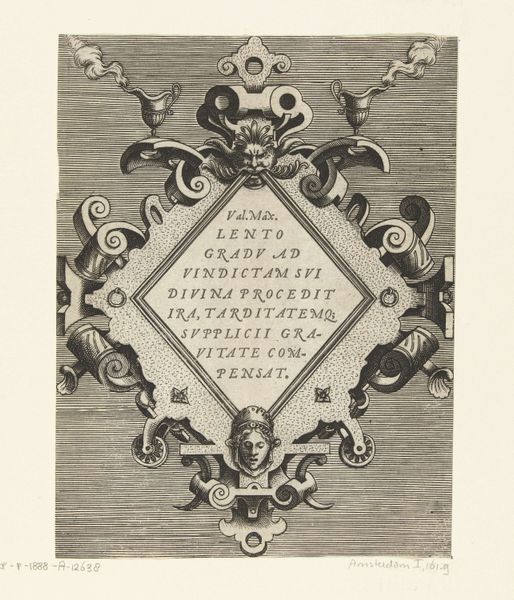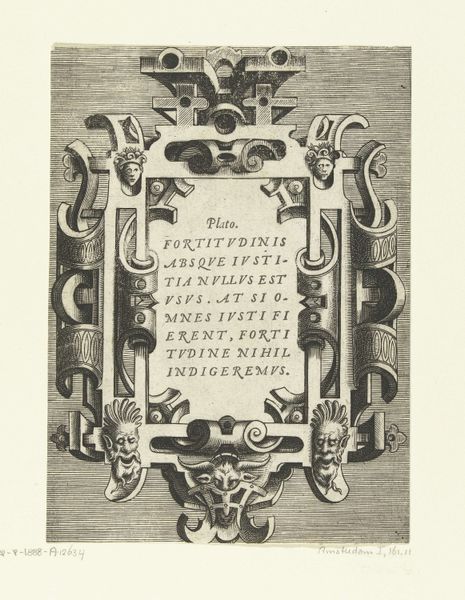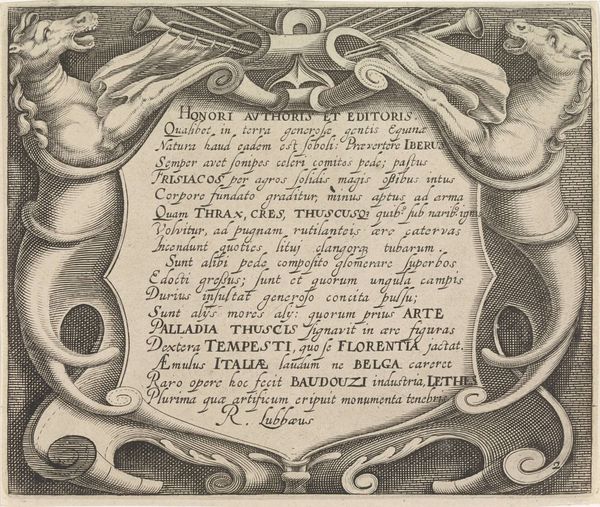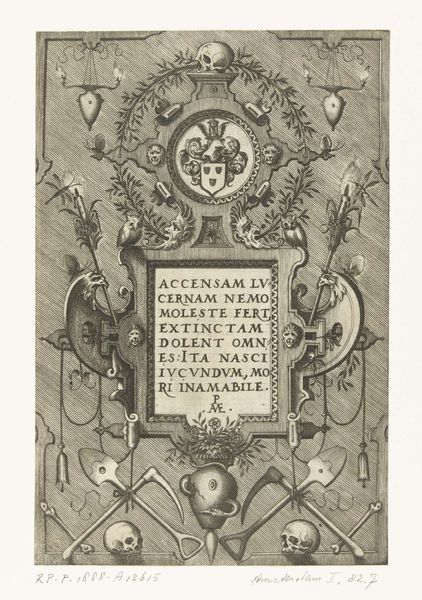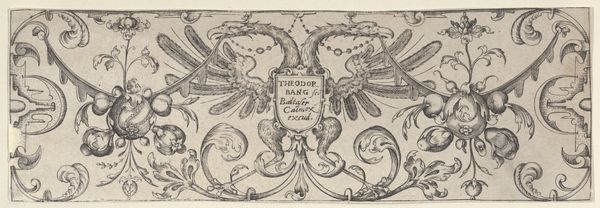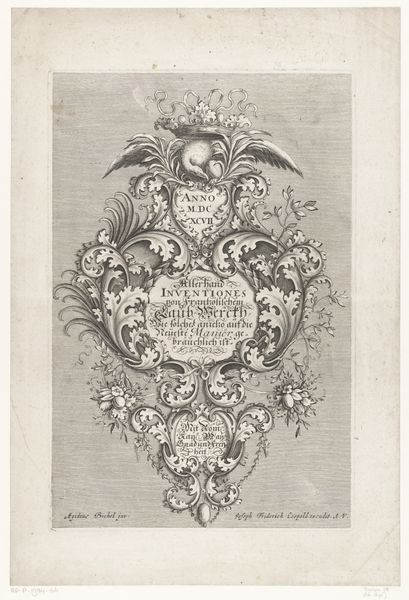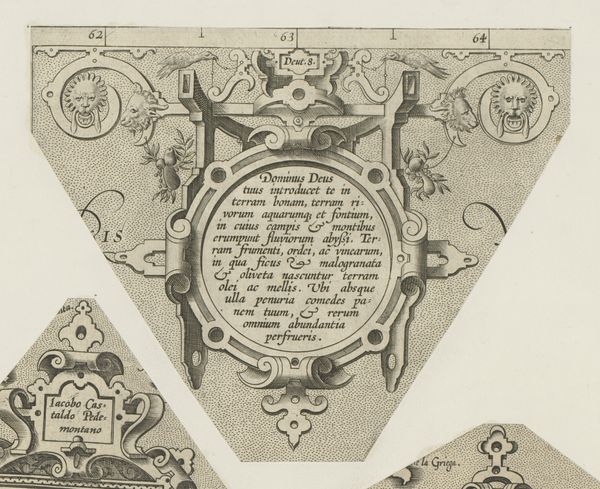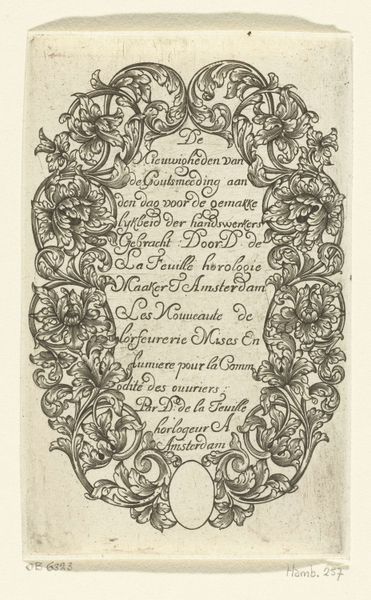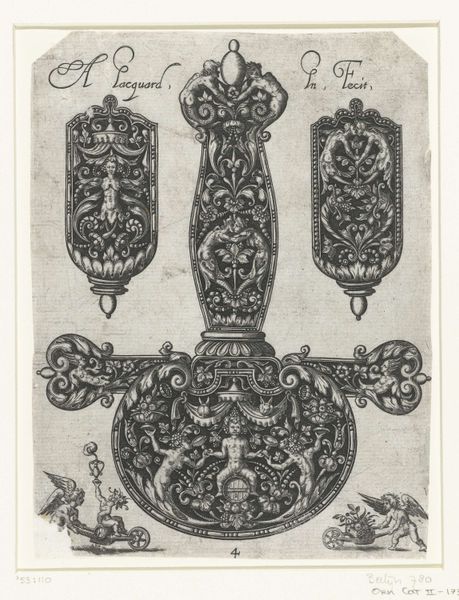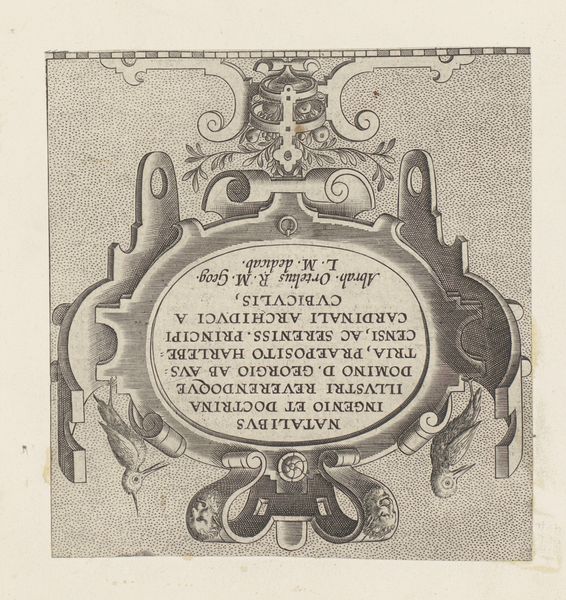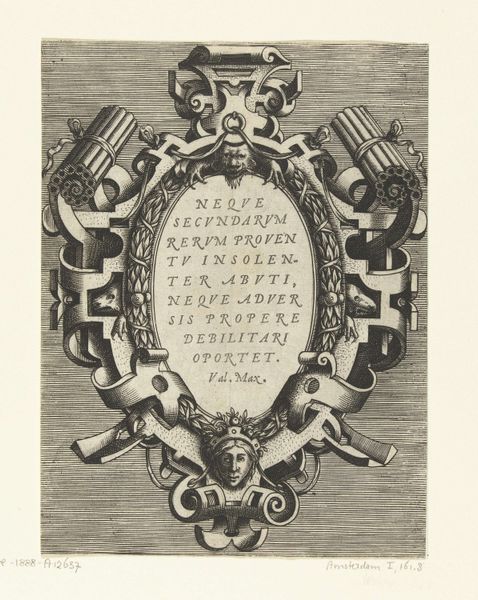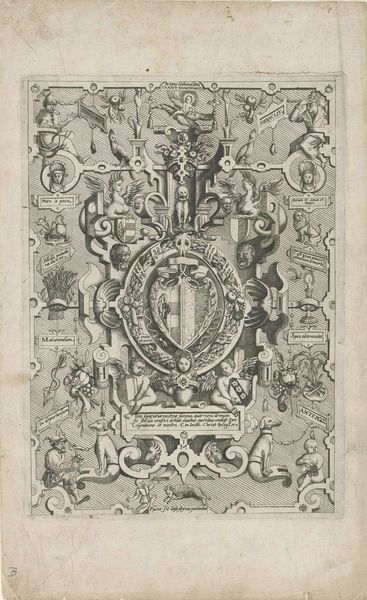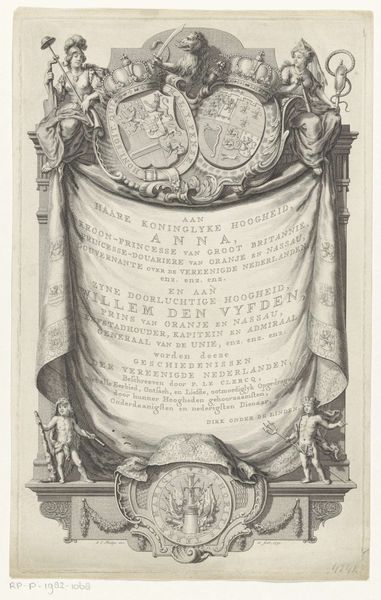
graphic-art, print, engraving
#
graphic-art
#
pen drawing
# print
#
pen illustration
#
11_renaissance
#
pen-ink sketch
#
pen work
#
northern-renaissance
#
engraving
Dimensions: height 165 mm, width 99 mm
Copyright: Rijks Museum: Open Domain
Curator: So, here we have “Shells and Fish,” a 1587 engraving by Philips Galle, currently held at the Rijksmuseum. Quite the cornucopia of sea life encased in swirling ornamentation, wouldn't you say? Editor: It feels like a visual puzzle, almost overwhelmingly detailed. All those tiny lines, creating these textures of scales and shells. The fish especially – their eyes have a certain haunting quality, don't they? It makes me wonder about the labor involved, crafting all this minute detail. Curator: Well, Galle was a prolific printmaker, and Antwerp, where he was based, was a major center for the printing industry. Prints were commodities, produced in workshops. Looking at the two seashell cartouches with text, enclosed by natural motifs, tells me it was probably made as a presentation print, intended to circulate amongst fellow artists and patrons, showcasing his skill. Editor: Right, the materials become really important there. It's an image *of* nature, created *through* these incredibly processed materials and labor. It becomes less about representing the beauty of the sea and more about this human need to master and reproduce it through technology of the printing press. Did this skill impact Galle's success in the business, would you say? Curator: Undoubtedly. Galle’s skill in rendering detail would have been highly valued. This wasn’t just a pretty picture; it was a demonstration of virtuosity. There’s also something whimsical about how the ribbon bows link everything, from the realistic fish in between the two cartouches of text, to all those carefully observed seashells that edge the frame. Editor: And those intertwining elements suggest a connection, perhaps reinforcing the ties between commerce and art, between labor and display. You know, viewing art from the perspective of those whose toil makes its existence possible invites questions. Is it not just an object of admiration, but an artifact laden with the histories of work, expertise, and societal exchange? Curator: You’re quite right; seeing past the purely aesthetic allows us to connect it with economic and societal dynamics. Thinking of Galle’s context changes how we receive the piece. Editor: Exactly, considering its place as an aesthetic *and* material creation grants deeper insight to this particular graphic piece.
Comments
No comments
Be the first to comment and join the conversation on the ultimate creative platform.
